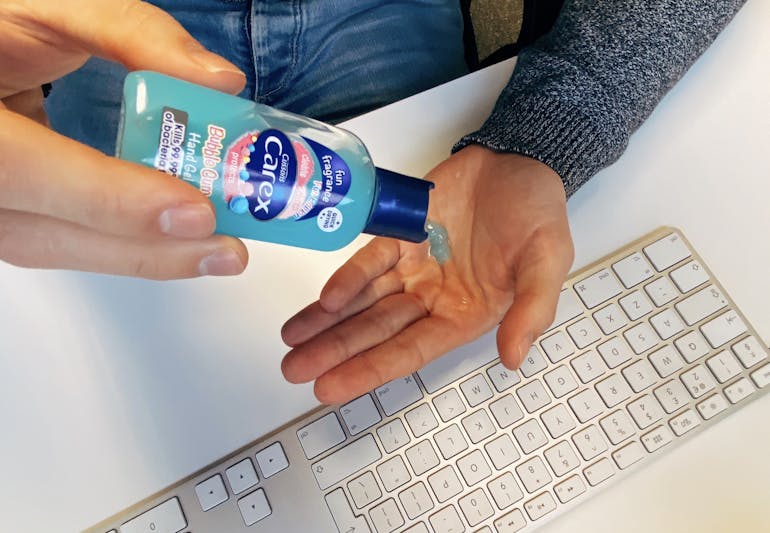How To Stop The Coronavirus Using Hand Sanitiser: Tips From A Pharmacist
Reviewed and fact-checked by Giulia Guerrini, Superintendent Pharmacist. Read our editorial policy to see how we create informative, accurate content.
We need to work together to help prevent the spread of the coronavirus. We’ve put together some quick tips to make sure you’re using hand sanitiser correctly and staying safe.
You might think you just need a squirt of hand sanitiser to effectively get rid of those germs but you’ve been led astray. Hand sanitisers come in handy little travel bottles nowadays, because we’re all in a rush, right? You can now kill 99.9 per cent of those germs when you’re on the move. Hand sanitisers are very useful to have during peak respiratory virus season (usually lasting from November to April) because they make it much easier to clean your hands.
But when we’re in a rush, we might be applying the hand sanitiser wrong.
Pouring it on your hands and letting them air dry = wrong
Pouring it on your hands and giving it a 3-second rub = also wrong
How to use hand sanitiser properly
You need friction to loosen those germs from your skin and this is one of the most common mistakes from us all when applying hand sanitiser.
Hand sanitiser isn’t the go-to for getting rid of dirt and grim, you’ll want to make sure your hands are ‘relatively’ clean before using it.
Apply a small pea-sized amount to your hands and rub them together for at least 30 seconds, making sure you’re getting between all your fingers too.
Then give it a minute or two to dry before touching anything else.
Hand sanitisers are pretty swift at getting to work, quickly killing 99.9 per cent of all microorganisms on our hands.
What type of hand sanitiser should I use?
It’s recommended that you wash your hands with soap and water whenever possible but when that’s not possible, the best hand sanitiser to use is one with more than 60% alcohol content. Alcohol-based hand sanitisers don’t kill all germs but they’re very effective at reducing microbes on your skin when used in the correct way. Make sure your hands are free of visible dirt and grease so that the effectiveness of the sanitiser is fully utilised.
Studies have found that using a hand sanitiser with an alcohol concentration of above 60% are much more effective at killing germs than those with a lower alcohol concentration or non-alcohol-based hand sanitisers.
There are so many different types of hand sanitisers. They can come in gel form, foam form and can even be scented. We like this bubble gum one here at medino.
Whilst using hand sanitiser is very effective, they don’t kill everything. Some illnesses such as the highly contagious stomach bug norovirus and the diarrhoea-causing bacterium Clostridium difficile don’t seem to be affected by the use of hand sanitisers. Though it’s much less likely you’ll come in contact with these bugs unless you’re constantly in a hospital environment.
Are hand sanitisers bad for you?
It’s been said that hand sanitisers can kill the good bacteria on your hands too. That’s true, but there’s nothing to suggest that this can cause any adverse health effects. Germs are practically everywhere so there’s no avoiding them. You just want to try and avoid the ones which can make you ill.

